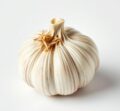Refreezing cake pops can be a bit tricky, but with the right techniques, you can maintain their texture and taste for later enjoyment! Whether you’re trying to save leftovers or prepping ahead for an event, knowing how to properly refreeze cake pops is key to keeping them fresh and delicious. In this guide, we’ll walk you through the best methods to ensure your cake pops stay moist and flavorful, without compromising on their smooth coating or their delightful bite. So, if you’ve ever wondered how to handle these little treats after they’ve been frozen, you’re in the right place!
Can You Refreeze Cake Pops?

Yes, you can refreeze cake pops-but with caveats. Like many baked goods, cake pops are composed of several elements that react differently to freezing and thawing cycles. At their core, cake pops are a mixture of crumbled cake and frosting, often coated with chocolate or candy melts. This combination, while delicious, becomes delicate once frozen and thawed, as changes in moisture levels and texture can significantly affect quality.
The primary concern when refreezing any previously frozen food-including cake pops-is food safety. If the cake pops were thawed in the refrigerator and have not been left out at room temperature for more than 2 hours, they are generally safe to refreeze. However, if they were thawed on the counter or have been sitting out for a prolonged period, refreezing is not advisable due to the potential growth of harmful bacteria.
Another consideration is the integrity of the candy coating. While the interior of the cake pop is somewhat forgiving when it comes to moisture fluctuations, the outer shell can become compromised-turning from a snappy chocolate crust to a soft, sometimes sticky exterior upon refreezing.
How To Refreeze Cake Pops?
If you’ve decided to proceed with refreezing your cake pops, follow this step-by-step guide to help preserve their quality as much as possible:
-
Assess the Condition:
Before you refreeze, check if the cake pops are still firm and haven’t started to sweat or melt significantly. The best candidates for refreezing are those that have been kept chilled and handled with care.
-
Flash Freeze (Optional but Recommended):
Lay the cake pops in a single layer on a parchment-lined baking sheet, ensuring they don’t touch each other. Place the tray in the freezer for about 1-2 hours, or until the pops are frozen solid. This prevents them from sticking together and helps retain their shape.
-
Wrap Individually:
Once frozen, wrap each cake pop in plastic wrap or wax paper. This provides a barrier against freezer burn and helps preserve texture. If you’re concerned about moisture, a layer of aluminum foil around the plastic can add extra protection.
-
Store in an Airtight Container:
Place the wrapped pops in a sturdy, airtight container or a heavy-duty freezer bag. Make sure to remove as much air as possible to prevent freezer burn.
-
Label and Date:
Always label your container with the current date. While cake pops can technically remain safe in the freezer for several months, for best taste and texture, try to consume them within 4-6 weeks.
Quality Impact
Refreezing cake pops isn’t without consequences. Here’s what to expect:
- Texture Changes: The most noticeable alteration is in texture. The once-dense and moist interior might become crumbly or slightly dry. The frosting binding the cake may separate or become grainy after multiple freeze-thaw cycles.
- Coating Issues: The chocolate or candy coating may develop condensation or discoloration. This is due to sugar bloom or fat bloom, which occurs when moisture interacts with the coating during temperature fluctuations. While not harmful, it can be unappealing.
- Flavor Loss: Extended or repeated freezing can dull flavors. Any exposed areas or damage to the protective coating can lead to the absorption of freezer odors, diminishing the original taste.
- Structural Integrity: Stick placement may loosen or shift as internal moisture expands and contracts during freezing. This can cause the cake pop to detach from its stick, especially when handled after thawing.
To counteract these effects, it’s best to refreeze cake pops only once and always aim for optimal initial freezing conditions.
Refreezing cake pops is possible and can be done safely, provided a few essential guidelines are followed. Always ensure that the treats have been stored properly and haven’t sat at room temperature for too long. While some minor losses in texture and appearance are to be expected, careful preparation-such as individual wrapping and flash freezing-can go a long way in preserving both the visual appeal and taste of your confections.
Ultimately, the key is balance: if you find yourself frequently freezing and refreezing cake pops, it may be worth adjusting batch sizes or storage methods to better suit your consumption habits. With a bit of planning and know-how, your delightful cake pops can remain as tempting and tasty as the day they were first made.
Is It Safe To Refreeze Cake Pops?
Refreezing cake pops can be safe under the right conditions-but it’s not always recommended. These delightful, bite-sized treats are made of crumbled cake mixed with frosting and coated in a chocolate or candy shell, which makes them particularly sensitive to changes in temperature and moisture.
If the cake pops were initially frozen and thawed properly-meaning they were kept in the refrigerator and not left out at room temperature for more than a couple of hours-then refreezing them is generally safe from a food safety perspective. However, safety isn’t the only concern. The repeated freezing and thawing process can severely impact the texture, flavor, and structural integrity of your cake pops. The cake interior may become mushy, and the outer coating may develop condensation, making it sticky or cracked once refrozen.
To retain the best taste and appearance, it’s ideal to freeze cake pops only once. But if you find yourself with leftovers or an overabundance of pre-made pops, and you’ve handled them correctly, refreezing is a viable-if not optimal-option.
Signs That Cake Pops Should Not Be Refrozen
Before tossing your cake pops back into the freezer, it’s essential to assess whether they’re still suitable for preservation. Here are some telltale signs that they’ve passed the point of no return:
-
Excess Moisture or Stickiness
If your cake pops feel tacky or overly wet to the touch, especially around the candy coating, that’s a sign the outer shell has begun to break down. Refreezing in this state may cause further degradation and encourage freezer burn.
-
Off Smell
Trust your nose. If there’s a sour, rancid, or otherwise unusual odor, particularly from the cake interior, it could be a sign of bacterial growth. Do not refreeze or consume.
-
Texture Changes
If the cake part is already soggy or crumbly in a non-uniform way-like a spongy exterior with a mushy center-that’s a warning flag. The structural changes from one freeze-thaw cycle have already taken their toll.
-
Time Left at Room Temperature
Any cake pops that have been sitting out at room temperature for more than 2 hours (or 1 hour in a warm environment) should not be refrozen. This is a critical food safety rule to prevent the growth of bacteria such as Staphylococcus aureus.
Common Refreezing Mistakes
Refreezing cake pops may seem straightforward, but many fall into simple yet detrimental traps. Here are the most common mistakes people make-and how to avoid them:
-
Refreezing After Improper Thawing
Thawing cake pops on the counter is convenient, but it’s a recipe for disaster. Always thaw in the refrigerator to keep the internal temperature safe. Refreezing cake pops thawed at room temp can be risky and result in spoilage.
-
Not Rewrapping Properly
Exposing cake pops to air-even in the freezer-can dry them out and cause freezer burn. Always rewrap tightly in plastic wrap and then place in an airtight container or freezer bag before refreezing.
-
Refreezing with Damaged Coating
If the chocolate or candy coating has cracked or separated, moisture will seep into the cake, leading to texture breakdown and poor visual appeal after refreezing.
-
Refreezing Multiple Times
Each freeze-thaw cycle further deteriorates quality. Refreeze only once. After that, it’s better to eat them or discard them.
Tips And Tricks
Want to preserve cake pops without compromising their deliciousness? Here are some expert-level tips to help maintain their flavor and appearance through freezing and refreezing:
-
Flash Freeze First
Place the cake pops in a single layer on a baking sheet and freeze for 1-2 hours until solid. Then wrap individually in plastic wrap and store in an airtight container. This keeps them from sticking together and helps retain their shape.
-
Use Vacuum Sealing
If you have access to a vacuum sealer, use it! Removing air is one of the best ways to prevent freezer burn and maintain freshness.
-
Label and Date
Always label your cake pops with the date they were originally frozen. Aim to consume them within 6-8 weeks for the best quality. Avoid keeping them beyond three months, even if they’re still technically safe.
-
Thaw Slowly
When it’s time to enjoy them, place them in the refrigerator for several hours or overnight. This gradual thawing helps maintain the structure of the coating and prevents condensation from ruining the appearance.
-
Re-dip if Needed
If your cake pops look a little worse for wear after refreezing, consider giving them a quick aesthetic makeover. Melt some chocolate and re-dip them to refresh their coating and restore shine and crunch.
Conclusion
Refreezing cake pops is a delicate dance between practicality and quality. While it’s generally safe to refreeze them if they’ve been handled and stored properly, the taste, texture, and appearance may take a hit. Recognizing when cake pops should not be refrozen is essential for both food safety and enjoyment. By avoiding common mistakes and applying a few savvy preservation tricks, you can extend the life of these sweet treats without sacrificing too much of their charm. Ultimately, though, cake pops are best enjoyed fresh-or at most after a single round in the freezer.
So, next time you whip up a batch or bring home a box from your favorite bakery, consider freezing in smaller portions or gifting extras to friends. After all, deliciousness is always better shared than shelved.


